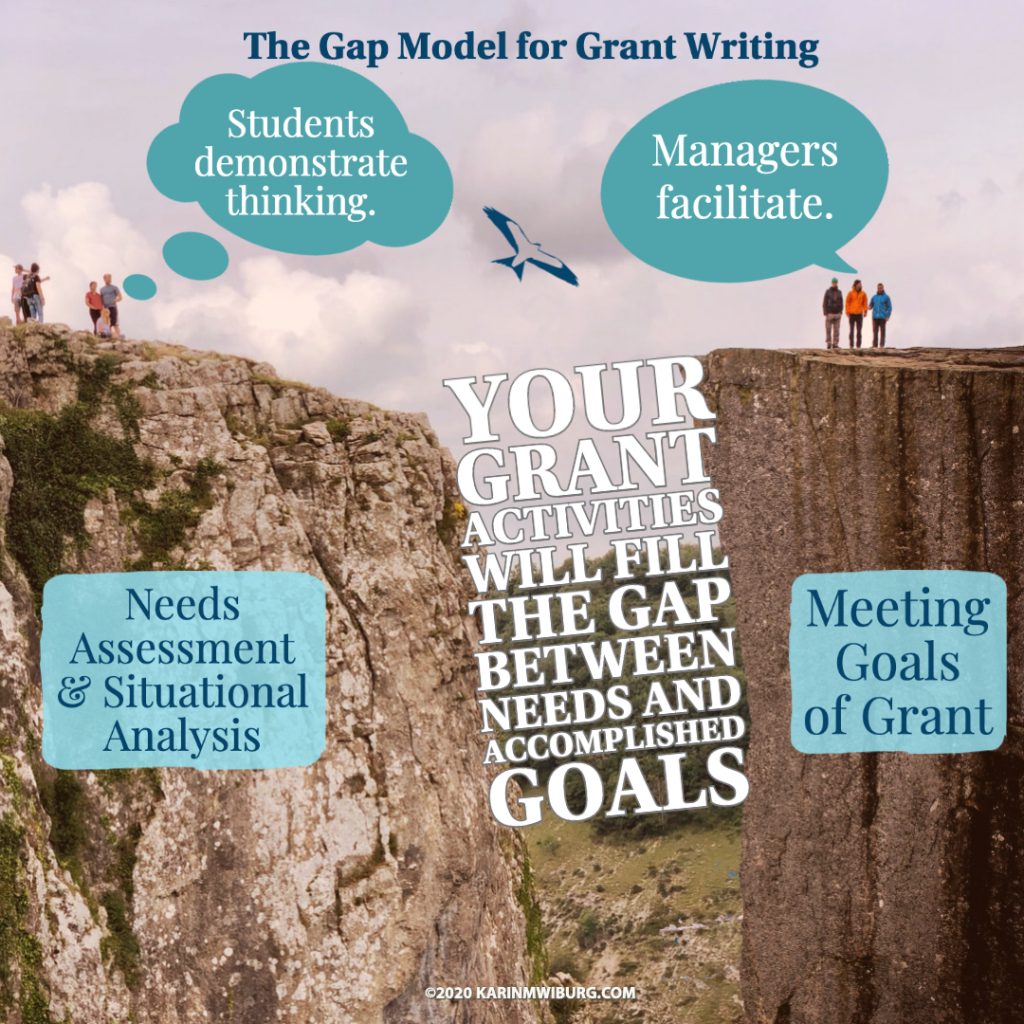By Karin M. Wiburg

This article describes a process for successfully writing and obtaining grants and funding for
your work, It first comments on a common flaw that unsuccessful grant writers experience.
The Fatal Flaw
“But we need the money.. We deserve the money” is the cry of these frustrated grant writers.
This is the fatal flaw, asking for funds just because you want funds and feel you deserve funding
isn’t going to get you the money you want.
The funding agency wants to know why you need funds. They are interested in the problem or
problems you have and how you will use the funds to solve the problems. They need a clear
explanation of where you are now and where you will be after receiving funding.
The Goal
Once you have identified your problem and have decided on what you want to change, begin to
envision the final state of your grant. Who will be affected by the grant? What will be the effect
of the grant on people, institutions, ideas. You will describe the goals and objectives that live on
the right side of the Gap analysis process.
The Gap Analysis Process
Over my years as a teacher of grant writing and a grant writer myself, I’ve developed a number
of tools to put a grant together within a model we call the gap model. The picture of the Gap
model is on the next page. On the cliff on the left side you will put your current needs for your
grant and on the right you will define clear goals and objectives for your project. The grant you
write will be the activities needed to move from your needs to your goals and will be designed to
fill the gap. Use the following steps to implement the grant writing process.
1. Identify with your grant team the problem they are trying to solve with this.
2. Focus on what it would look like if you receive the grant. What would your goals and
objectives be? What will you change and how? Create goals and outcomes on the right side of
the gap.
3. Move to the left side of the graphic and do a needs assessment on the current state of those
factors you plan to change.
4. Include the strengths of your situation as well as the needs..
5. Your grant is your plan to fill in the gap.
The final steps
These are the basic steps which form the foundations for your grant. Once you have identified
your goals and objectives, the final step will be to form an action plan for implementation of the
grant. Some form of assessment and evaluation should also provide the feedback you will need
to keep your grant moving toward your goals.
